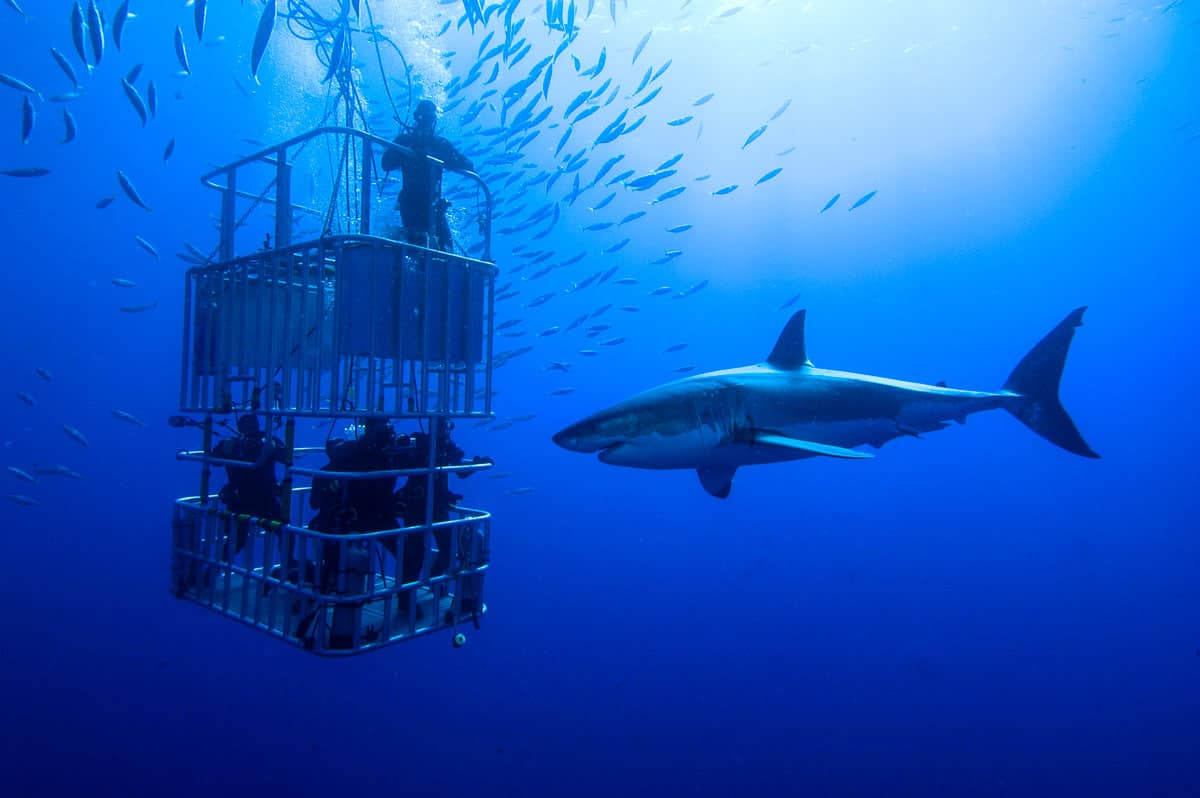It’s 1975, and Junko Tabei from Japan is the first woman who summits Mount Everest. OPEC raises prices, and a barrel of oil costs $13USD. The US withdraws from Vietnam. Bill Gates officially founds Microsoft. Construction begins on the Trans-Alaska Pipeline. Jaws debuts in theaters worldwide and becomes the first-ever summer blockbuster film, terrifying generations and fueling pop culture contempt for even the coolest sharks.
Sharks have been mythologized for eons, revealing a complex and controversial history with humans. Films like Jaws prey upon long-held societal perceptions and illogical shark fears by serving up dramatized Hollywood blockbusters with sharks acting the villain. This demonization continues despite undisputed scientific research concluding that (a) sharks are integral components of healthy marine ecosystems, and (b) sharks are nothing like the man-eating stereotype for which they are cast.
Shifting negative impressions about sharks requires replacing fear with fascination. To cure your concerns, we’ve consulted with experts, reviewed literature, and dug up the most accurate and interesting facts about sharks out there. We’re diving beyond the question, “Are sharks fish or mammals?” (Interesting Fact #1: Sharks are not mammals but rather a group (and not a species) of elasmobranch fish).
So we have put together a handy, informational guide containing some of the rare, strange, and interesting shark types from around the globe – Enjoy.
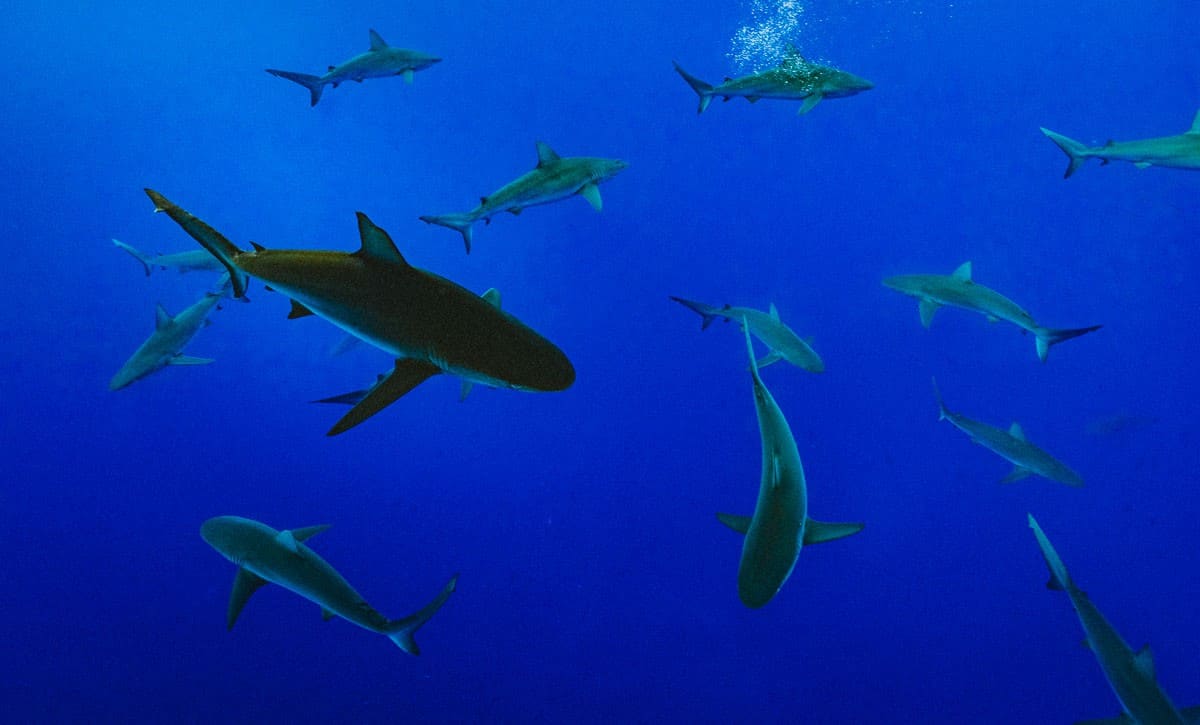
INTERESTING SHARK TYPES
Top 10 Sharks
Cookiecutter Shark
SCIENTIFIC NAME
Isistius brasiliensis
RECORD LENGTH
22in (56cm), typically 12in – 16in (30cm – 40cm)
RECORD MASS
Unknown
SPEED
Unknown
EST. GLOBAL POPULATION
Thought to be common
MAJOR THREATS
Habitat loss
FEEDS ON
Other sharks, fish, squid, pinnipeds, porpoises, whales
COMMONLY FOUND IN
Tropical and temperate seas worldwide

Embarrassingly tiny with a lean cigar-shaped body, the cookiecutter shark at first doesn’t seem to fit the bill as one of the world’s most unusual sharks. Closer inspection, however, reveals a mouth full of dentation and plump lips capable of great suction perfect for extracting plugs of flesh from unsuspecting prey. Unlike many sharks that lose individual teeth, the cookiecutter loses an entire set and swallows them. Science suggests that by consuming their teeth, the sharks are recycling important minerals like calcium that are hard to find in the deep sea.
The cookiecutter shark is known to hunt in the ultra-low light conditions of the mesopelagic depths. To make it easier to snag a meal, these dark water sharks have light-producing photophores on their bellies that emit a bright glow. Like moths to a flame, experts think their larger predators like pinnipeds, porpoises, and bigger fishes, are drawn closer by the light. When something encroaches too closely, the cookiecutter shark will likely ambush its prey and attempt a quick bite followed by a fast getaway before becoming the prey itself. It’s a risky proposition, but one that has paid off over evolutionary history.
Credit the diminutive size or deep-sea habitat, but the cookiecutter shark poses no danger to humans. There are, however, eyewitness reports of this small shark mistaking massive slow-moving submarines as prey.
Basking Shark
SCIENTIFIC NAME
Cetorhinus maximus
RECORD LENGTH
39ft (12m), typically 28ft – 32ft (8.5m – 9.8m)
RECORD MASS
14,000lbs (3628kg), typically 8000lbs – 9000lbs (3600kg – 4000kg)
SPEED
3mph (4.8kph) cruising, short bursts of 11mph (17kph)
EST. GLOBAL POPULATION
20,000 and declining
MAJOR THREATS
Vessel strike, marine debris entanglement, commercial fishery bycatch
FEEDS ON
Plankton, small fish, little bits caught in the “filter”
COMMONLY FOUND IN
Warm and cold oceans around the world
Hot off the press! “Spatio-temporal genetic tagging of a cosmopolitan planktivorous shark provides insight to gene-flow, temporal variation and site-specific re-encounters.” How’s that for a headline!
Say goodbye to the days when the only interesting facts about basking sharks were related to their behemothic size (notably the second-largest living fish in the sea) and languid filter-feeding. In February 2020 a slew of basking shark obsessed scientists published peer-reviewed research (presented with an incredible companion video) concluding that basking sharks are, in fact, cosmopolitan world travelers.
Sadly – Commercial harvesting of basking sharks extended through the 1990s, resulting in a population decline extreme enough to bag them a spot on the IUCN Red List. “This [research] is shedding new light on their seasonal residency and winter migration, which is key to their conservation” says basking shark expert Dr. Suzanne Henderson. Dr. Philip Doherty chimes in, “knowing where these animals are all year round allows us to understand the threats they face…this is essential information if we want to protect them.”
Still not convinced the basking shark is one of the most interesting shark types, get this – despite its considerable mass, a basking shark can torpedo its body at 5 meters per second; ample speed to launch completely out of the water and achieve full, if instantaneous, flight. Be sure to take the time to watch this incredible basking shark stunt – it truly is something to marvel at!
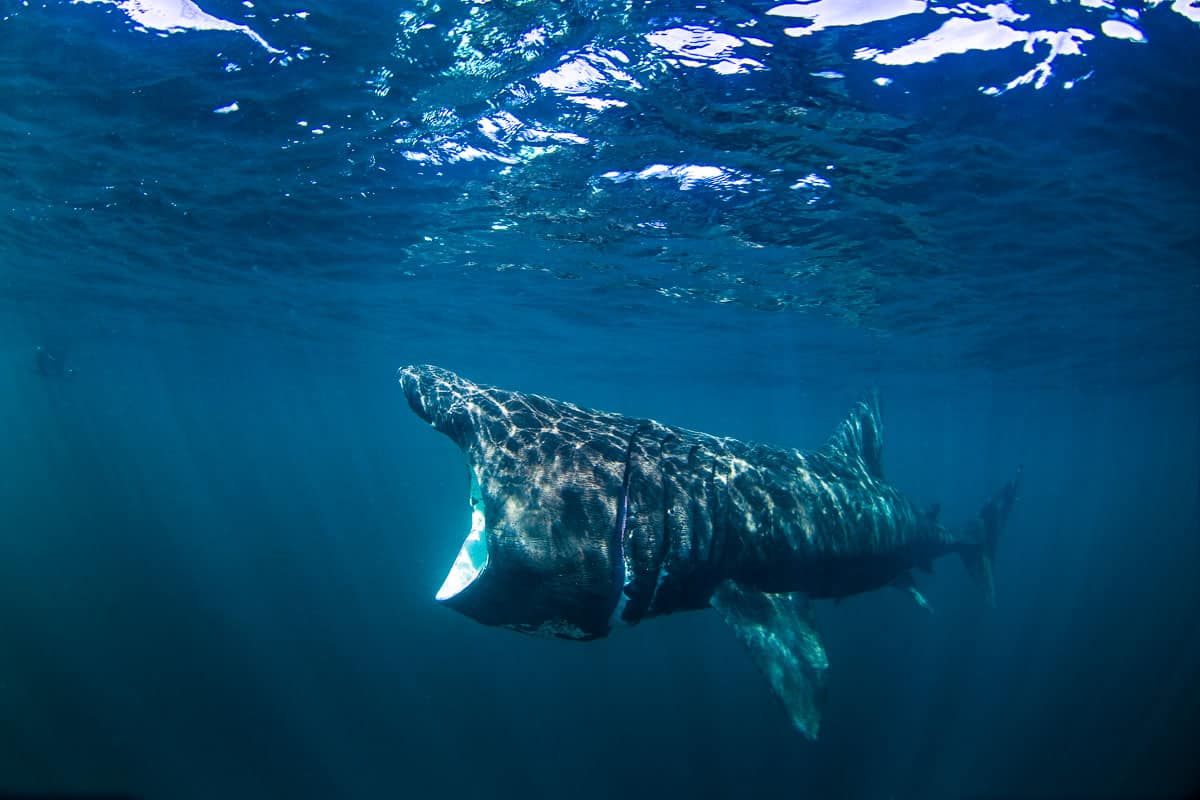
Leopard Shark
SCIENTIFIC NAME
Triakis semifasciata
RECORD LENGTH
6.5ft (1.98m), typically 1.5ft – 4ft (0.5m – 1.2m)
RECORD MASS
40lbs (18.4kg)
SPEED
2 mph (2.4kph – 3.2kph)
EST. GLOBAL POPULATION
Unknown, but considered common
MAJOR THREATS
Habitat loss, fishing pressures, incidental catch
FEEDS ON
Squid, small fishes and fish eggs, mollusks, crustaceans, worms
COMMONLY FOUND IN
Pacific Ocean from Oregon, USA to Gulf of California
La Jolla is a picturesque California beach town, flocked to by visitors for stunning vistas, coastal breezes, and killer surf breaks. Millions of people gather at local beaches during peak summer months to beat the heat and bathe in the sea. Not surprisingly, humans aren’t the only creatures migrating in huge numbers to the La Jolla shore every summer.
Each summer, La Jolla’s waist-deep warm water teems not just with humans, but with thousands of leopard sharks. Seemingly with nothing to do and nowhere to go, these leopard sharks swim in unhurried circles along the sandy ocean bottom. Animals sometimes get together in groups when it’s time to mate, or if the feeding is good. In La Jolla, the leopard sharks were never observed mating, and didn’t seem to be feeding.
If they’re not eating or mating, why are thousands of leopard sharks attracted to the busy La Jolla waters? Dr. Andy Nosal is an expert at studying why sharks do what they do and started his career studying leopard sharks in La Jolla. His research shows that 97% of leopard sharks in the area are pregnant females. With this new information, Dr. Nosal advanced his hypothesis. “Now the question was, why were these pregnant females so shallow, and so close to shore?” Further studies have pointed to the idea that these sharks move to the shallows while incubating developing embryos. “The pups are growing faster when the mom is in warm water so it’s like a mother bird sitting them to keep them warm and maintaining an optimal temperature for development,” says Dr. Nosal.
Don’t let this abundance of leopard sharks keep you from enjoying the beach! Snorkeling among these harmless sharks has become a popular past time in La Jolla. Grab a mask and take a swim to see for yourself. Don’t forget your underwater camera!
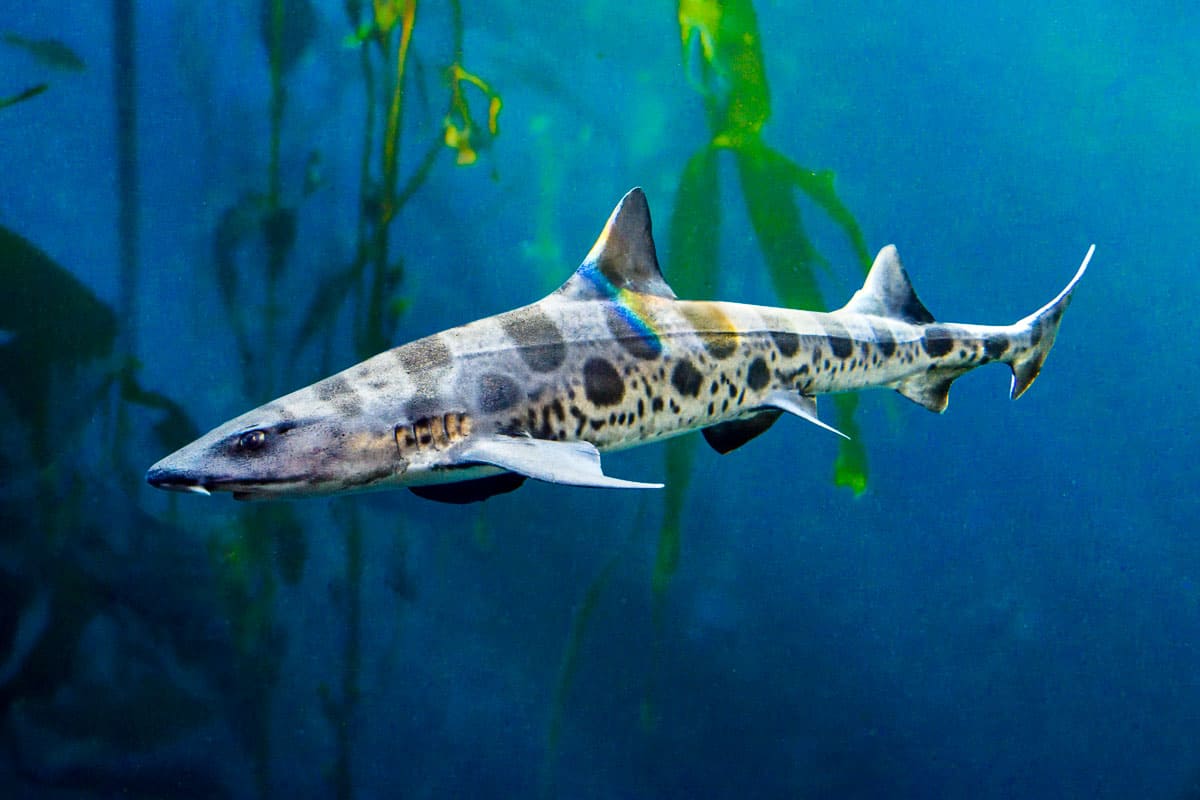
Wobbegong Shark
SCIENTIFIC NAME
Orectolobus sp.
RECORD LENGTH
10.5ft (3.2m), typically 5ft – 6ft (1.5m – 1.8m)
RECORD MASS
155lbs (70kg)
SPEED
Slow, often sedentary
EST. GLOBAL POPULATION
Thought to be abundant
MAJOR THREATS
Habitat damage, fisheries bycatch
FEEDS ON
Small fishes, crustaceans, octopus and other bottom dwelling invertebrates
COMMONLY FOUND IN
Warm temperate to tropical seas of the Pacific and Indian oceans
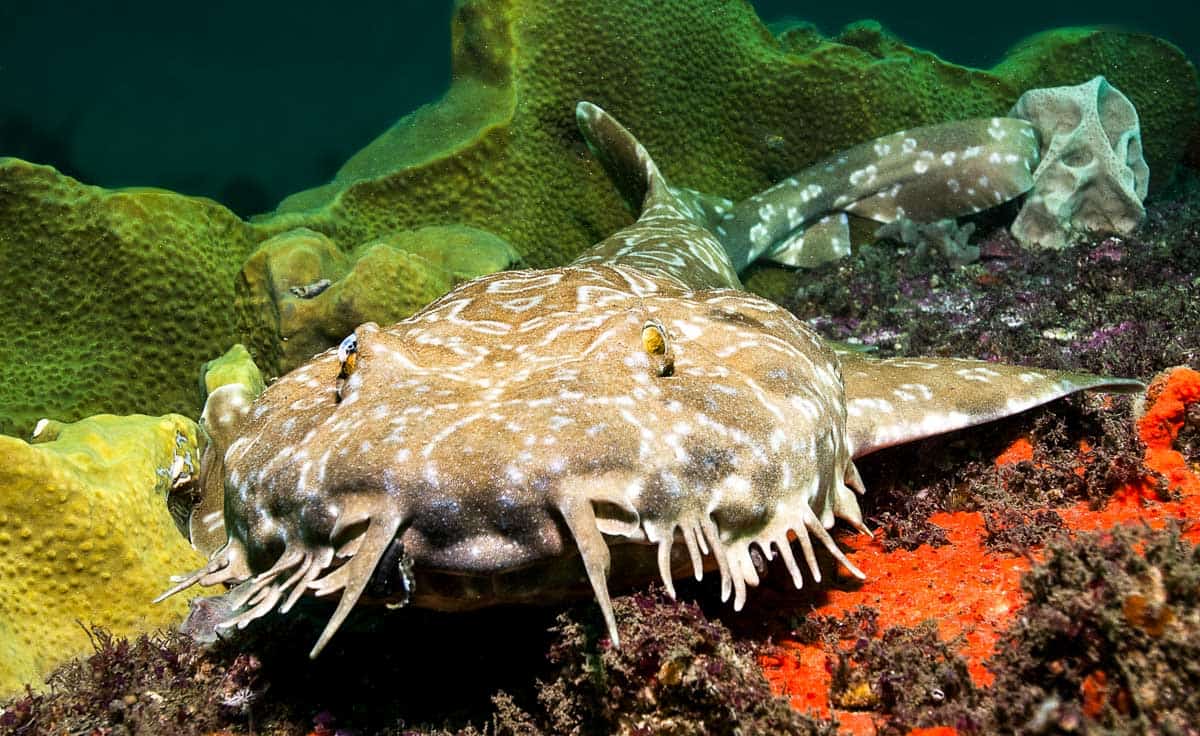
While many shark species are out gallivanting the global seas, Wobbegong sharks are well adapted to stay closer to home. Many individuals even show site-fidelity, which is a ‘sciency’ way of saying that they don’t stray too far from a particular area. In sum, research has shown these strange sharks are homebodies.
Nicknamed the carpet shark for the flat shape and shaggy appearance, the many species of Wobbegong are all distinctly patterned and ornately decorated. These masters of camouflage are one of the coolest looking sharks if not the weirdest looking shark around.
Unlike other shark species that must swim continuously to breathe, these strange looking sharks use strong cheek muscles to pump water into their gills. This helpful adaptation allows the shark to maintain what experts have deemed a “sluggish” lifestyle. The Wobbegong are nocturnal, bottom-feeding by night, and resting on the shallow seafloor by day.
You’re ready to ace your local trivia night with these wobbegong shark facts. Here is one more. Believe it nor not, the only known predators of the Wobbegong shark are the Homo sapiens; how very sad!
Greenland Shark
SCIENTIFIC NAME
Somniosus microcephalus
RECORD LENGTH
24ft (7.3m), typically 6ft – 12ft (2m – 4m)
RECORD MASS
2645lbs (1200kg), typically 1500lb – 2000lb (700kg – 1000kg)
SPEED
0.5mph – 1mph (0.8kph – 1.6kph), short bursts up to 2.2mph (3.5kph)
EST. GLOBAL POPULATION
Unknown, considered to be low
MAJOR THREATS
Habitat loss, fisheries bycatch
FEEDS ON
Other sharks, fish, pinnipeds, porpoises, carrion
COMMONLY FOUND IN
Arctic and North Atlantic seas
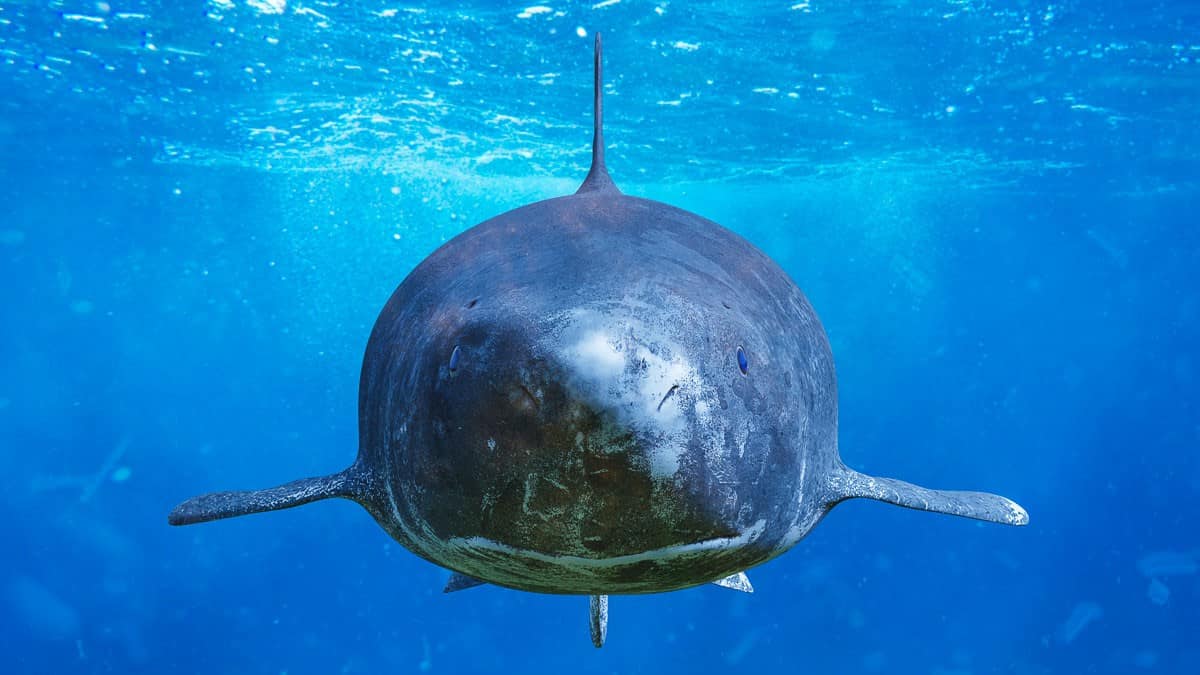
The oafish Greenland shark can be summed up on one word…slow. These strange sharks are slow to grow, increasing in size only one centimeter per year. They are heavy-set swimmers, resembling a log pushing through the water at a lethargic half-mile per hour. Baby making also takes an eternity; females must live to about 150 years old to reach reproductive age. A Greenland shark that doesn’t survive to the age of 150 will have lost its chance to perpetuate the species.
Greenland sharks have long been esteemed in Inuit legend and shrouded in scientific mystery. The first underwater photograph of a Greenland shark wasn’t taken until 1995, followed by a video in 2003. The sparse scientific literature available pointed at Greenland sharks living exceptionally long lives, but their elusiveness rendered them difficult to study in the wild.
A cohort of Dutch scientists published groundbreaking research in 2016 confirming the long-held notion that Greenland sharks were one of the oldest creatures around. The researchers utilized novel radiocarbon dating techniques to test 28 Greenland shark samples. The oldest was nearly 400 years, making the Greenland shark the longest living vertebrate on earth.
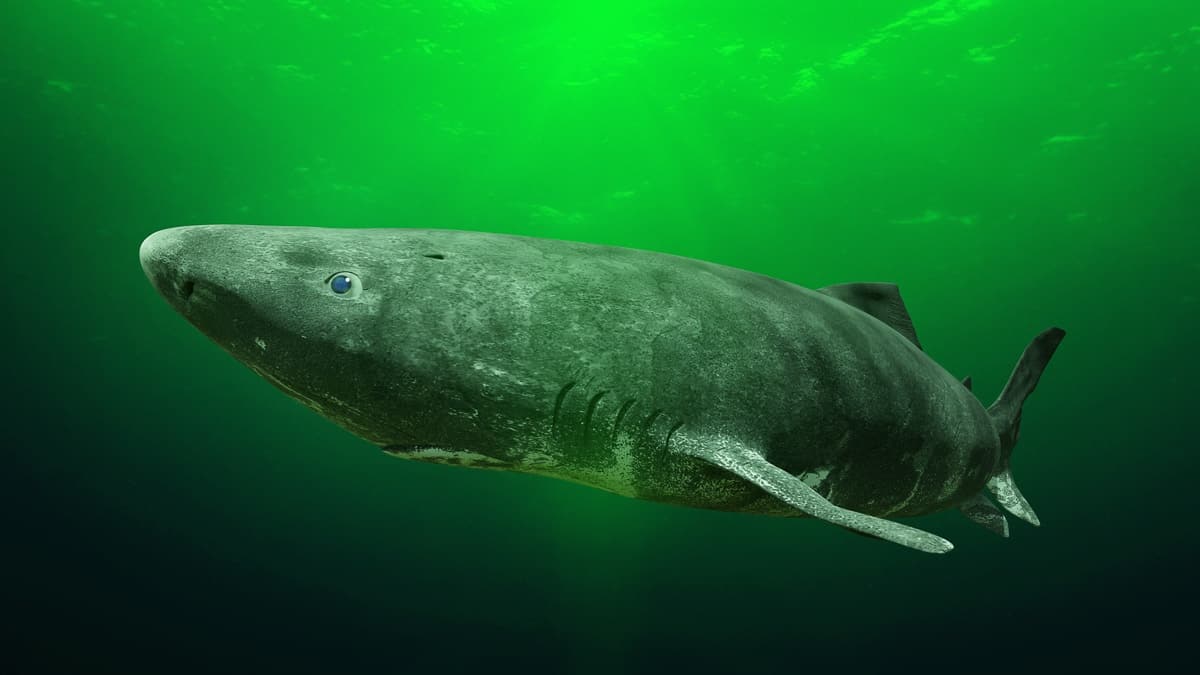
Whale Shark
SCIENTIFIC NAME
Rhincodon typus
RECORD LENGTH
65ft (20m), typically 20ft – 32ft (6m – 14m)
RECORD MASS
48,000lbs (21,772kg), typically 20,000lbs (9070kg)
SPEED
0.5mph – 2mph (1kmh – 5kmh)
EST. GLOBAL POPULATION
119,000 – 238,000
MAJOR THREATS
Vessel strike, fisheries bycatch, poorly conducted ecotourism
FEEDS ON
Plankton and nekton including crustaceans, small fishes, fish eggs
COMMONLY FOUND IN
Tropical and warm temperate seas except for the Mediterranean
Whale sharks have become a poster child for the global ecotourism industry. Renowned for their superlative size, these pretty sharks attract visitors to previously unrenowned destinations for a chance to see and swim with the largest fish in the sea. There’s no shame in wondering “are sharks fish or mammals?” For the record, whale sharks are named for their whale-like stature even though they are, in fact, just really, really big fish.
Ecotourism is synonymous with responsible travel, which aims to minimize negative impacts and maximize positive contributions of tourism on local communities. Implemented thoughtfully, ecotourism offers alternative livelihoods that replace the destructive use of a species such as overfishing. In the case of the whale shark, ecotourism has boomed in areas the whale sharks are known to visit. But researchers are wondering if this increased visitation is actually disturbing the sharks. Ali Wunderman spells it out here.
These gentle giants have been the center of a grand ecotourism experiment, and the jury is still out on whether ecotourism offers all its touted benefits. In the meantime, it is up to individuals to be responsible ecotourists! Here are some ways to ensure you maximize your positive contributions:
- Take only pictures, leave only footprints
- Wear reef-friendly sunscreen when you are in or near the water.
- Don’t touch, grab, ride, or otherwise disturb any animals encountered in nature.
- Travel with reusable flatware and a filtering water bottle to ditch the single-use plastics.
- Learn about the local cultures and act according to local norms.
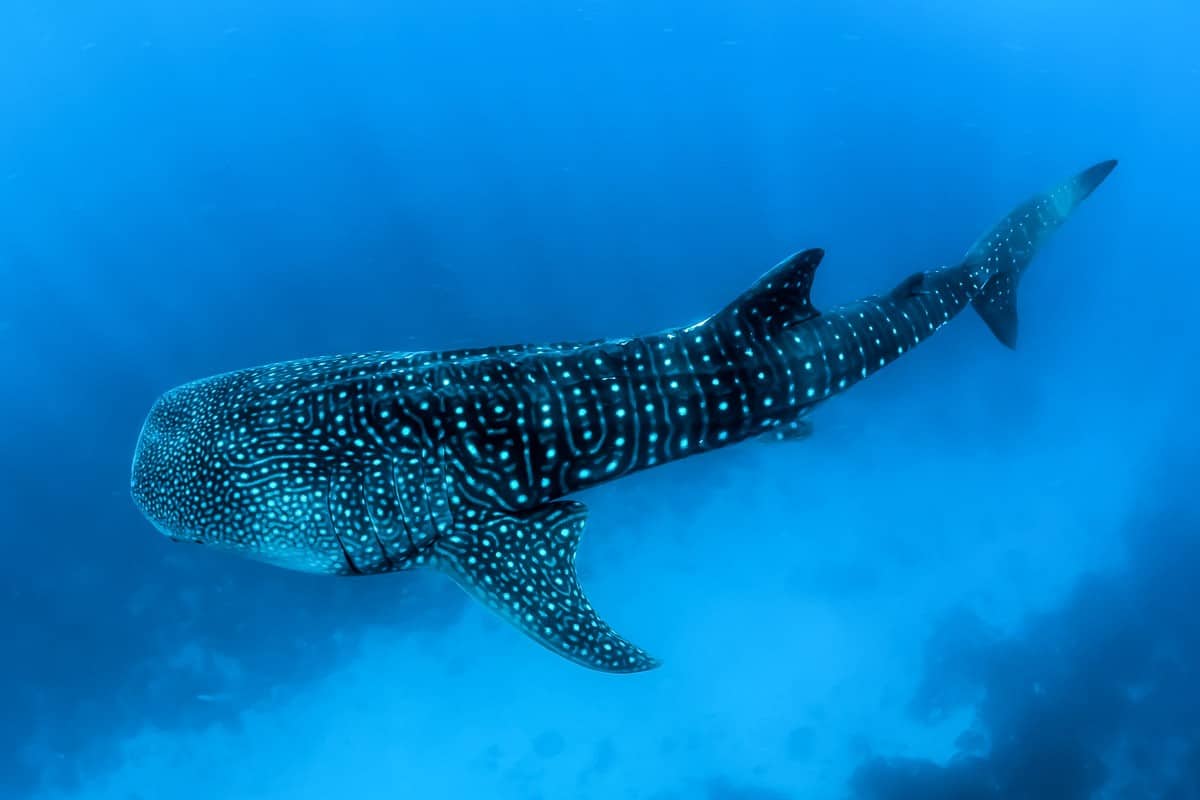
Nurse Shark
SCIENTIFIC NAME
Ginglymostoma cirratum
RECORD LENGTH
14ft (4.3m), typically 7ft – 8ft (2m)
RECORD MASS
240lbs (109kg), typically 150lbs – 200lbs (45kg – 90kg)
SPEED
Bursts up to 25mph (40kph)
EST. GLOBAL POPULATION
Unknown, but considered common
MAJOR THREATS
Irresponsible ecotourism, regional fisheries, commercial fisheries bycatch
FEEDS ON
Fish, lobster, crab, urchin, squid, snail, octopus
COMMONLY FOUND IN
Eastern Pacific, western Atlantic, tropical West Africa
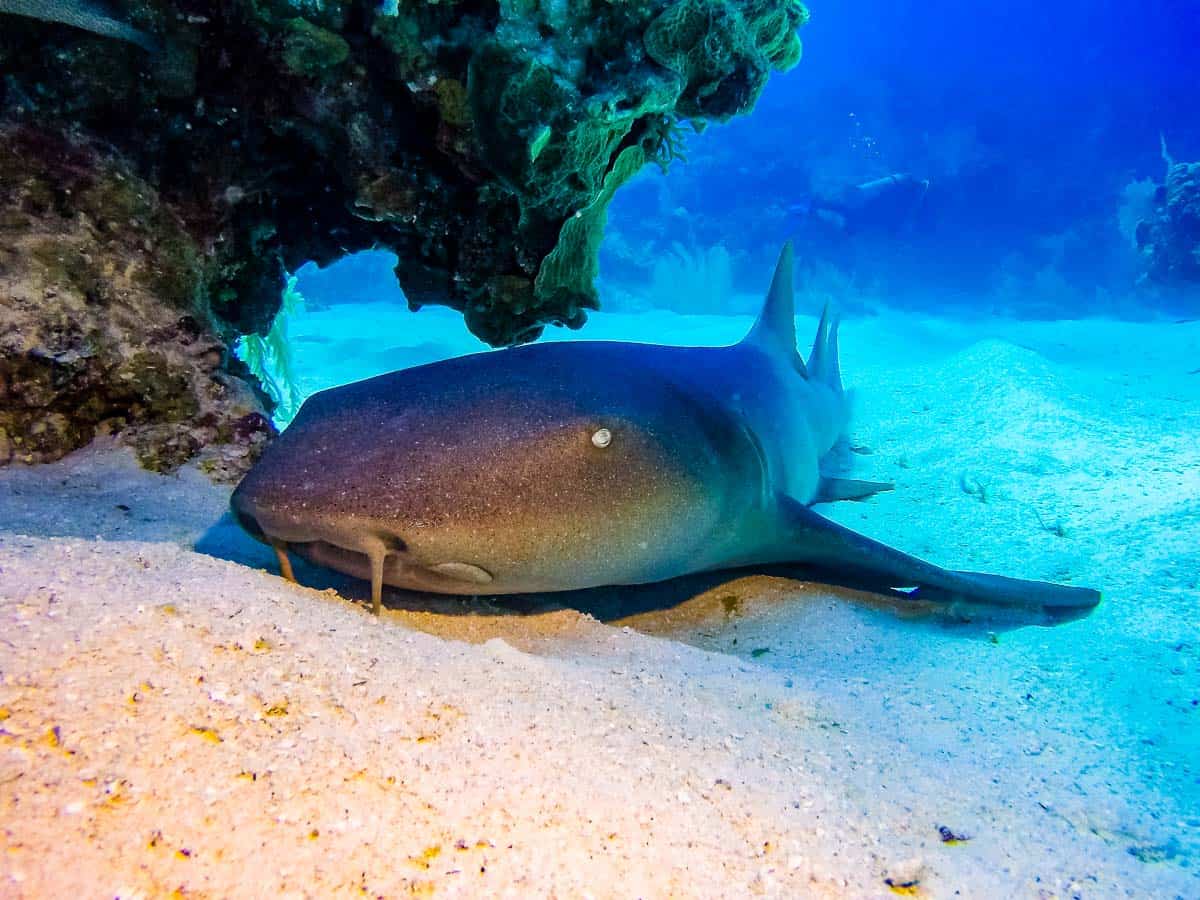
Notorious for their docile nature, these bottom-dwelling sharks are commonly spotted by ocean goers napping in shallow caves and rocky crevices. Swimming with nurse sharks is exhilarating and can be experienced responsibly in a way that is safe for the human and the shark. Reputable tour operators will clearly state and enforce any specific rules, which should always include keeping a respectful distance. Of utmost importance is to always follow the rules.
A cursory internet search demonstrates the importance of selecting a reputable tour operator for any wildlife excursion, especially one involving nurse sharks. Countless videos streaming online show uninformed tourists touching, rubbing, feeding, and even riding these wild animals. Scientific research suggests that these types of careless behaviors can cause long term behavioral impacts on animals like nurse sharks. Follow these best practices from our friends at PADI.com to be the best ecotourist you can be!
- Don’t ride, touch or stand on marine life. These creatures might look tough, but they can be easily injured.
- Don’t chase animals. They will frighten and swim away. The best way to get close to marine life if to simply stay still.
- Don’t feed the fish (or any animal you encounter). In many areas feeding wild animals is illegal.
- Choose a responsible tour operator. Make sure they are focused on protecting local marine life.
- Use your voice. Sometimes a gentle reminder of the do’s and don’ts is enough to change careless behavior.
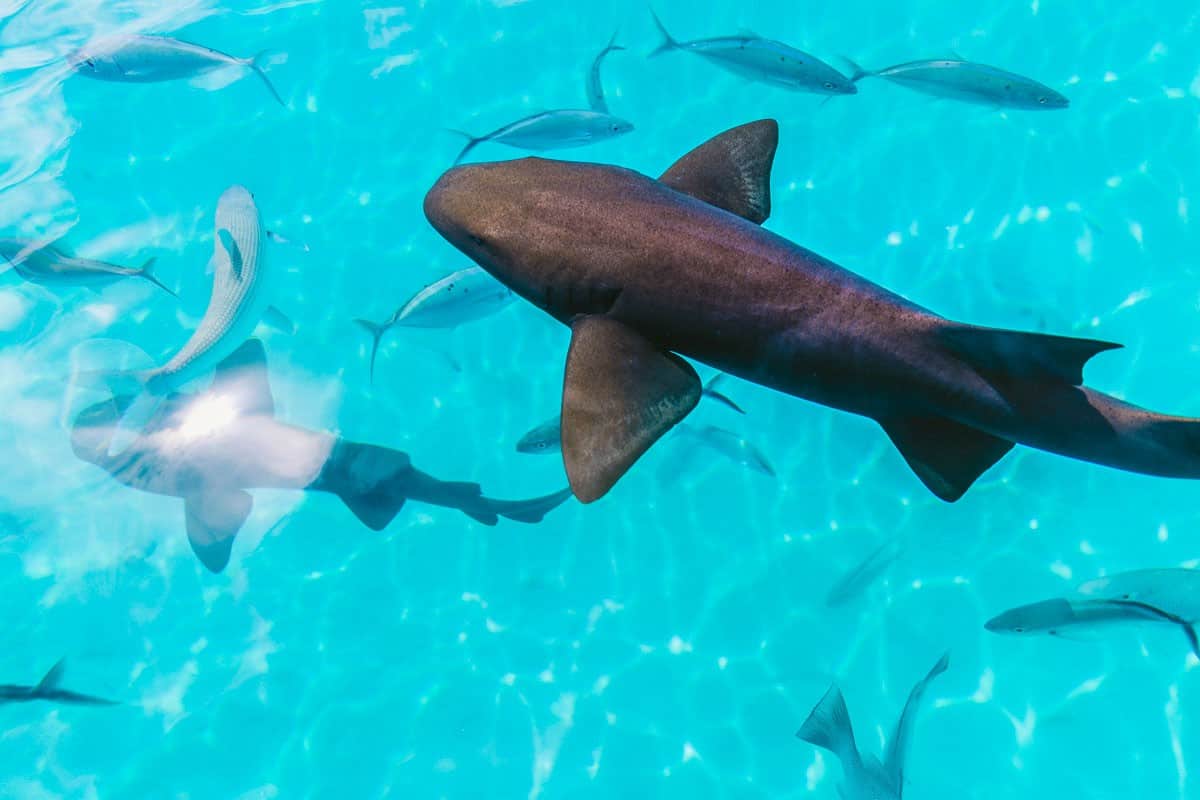
Tiger Shark
SCIENTIFIC NAME
Galeocerdo cuvier
RECORD LENGTH
18ft (5.5m), typically 13ft – 15ft (3.9m – 4.5m)
RECORD MASS
1780lbs (807kg), typically 850lbs – 1400lbs (385kg – 635kg)
SPEED
Bursts up to 20mph (32kph)
EST. GLOBAL POPULATION
Unknown, suspected to be in decline
MAJOR THREATS
Commercial harvesting especially for shark fins, fisheries bycatch
FEEDS ON
Sea turtles, rays, bony fishes, sea birds, dolphins, squid
COMMONLY FOUND IN
Temperate and tropical seas around the world
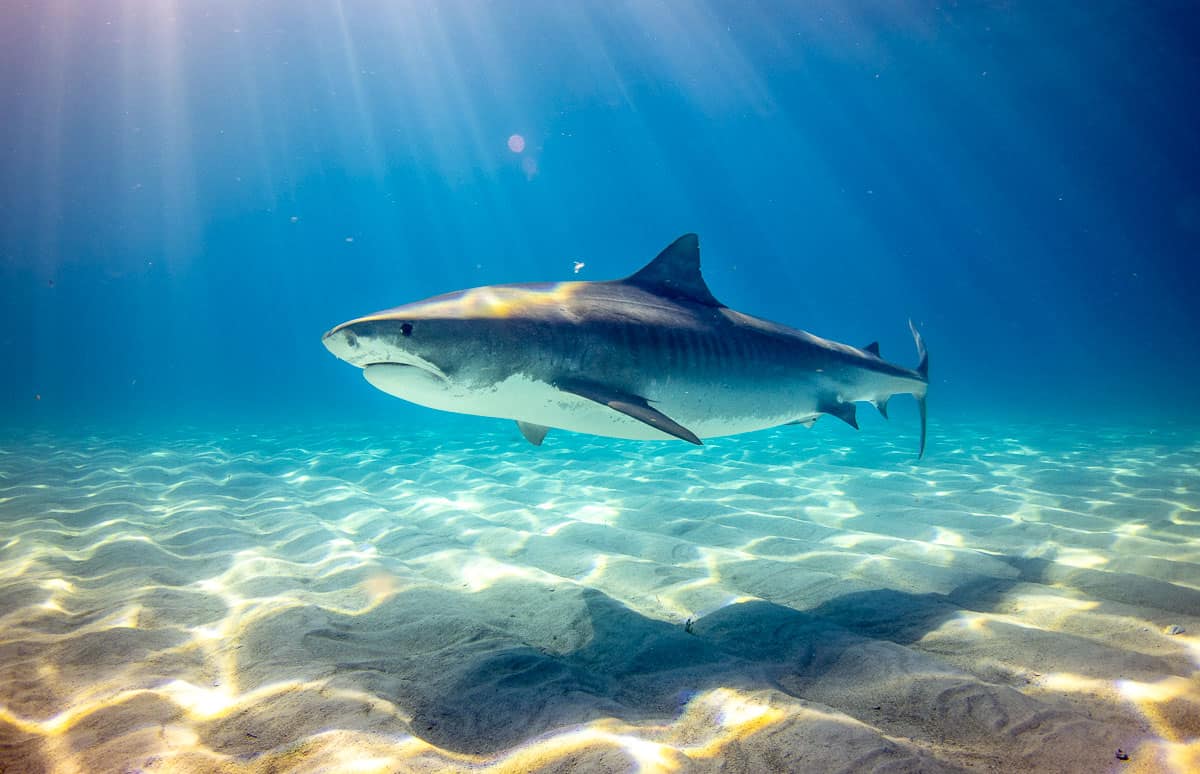
Tiger sharks are undoubtedly one of the most feared shark species. Generations of sensationalized news stories and other dramatized depictions of these apex predators have woven a false narrative of what these sharks are really like. Would it surprise you to learn that tiger sharks are actually the ones in danger?
Rather than heralding tiger sharks for their inherent beauty and ecological importance, humans historically (and still today) have participated in activities that negatively impact the sharks. Perhaps the most controversial are Shark Control Programs, which were designed in the pre-Jaws era to improve swimmer protection at popular beaches in certain areas. Though well-intentioned, these programs relied on the culling of tiger sharks in certain destinations popular with tourists. Decades of research have shown these programs to be ineffective at improving swimmer safety, despite being to the detriment of many marine life species including tiger sharks, turtles, whales. This approach seems ever more blinkered when we observe dives like Shark Fest Fiji, where divers interact safely with hundreds of sharks (primarily tigers) on one of the most exhilarating dives on the planet.
In 2019, the Great Barrier Reef Marine Park Authority in Queensland, Australia was ordered to end the “lethal component” of the program. Regarding the decision, the Administrative Appeals Tribunal stated: “It is plain from the evidence given in these proceedings that Queensland’s lethal [program] is out of step with national and international developments.”
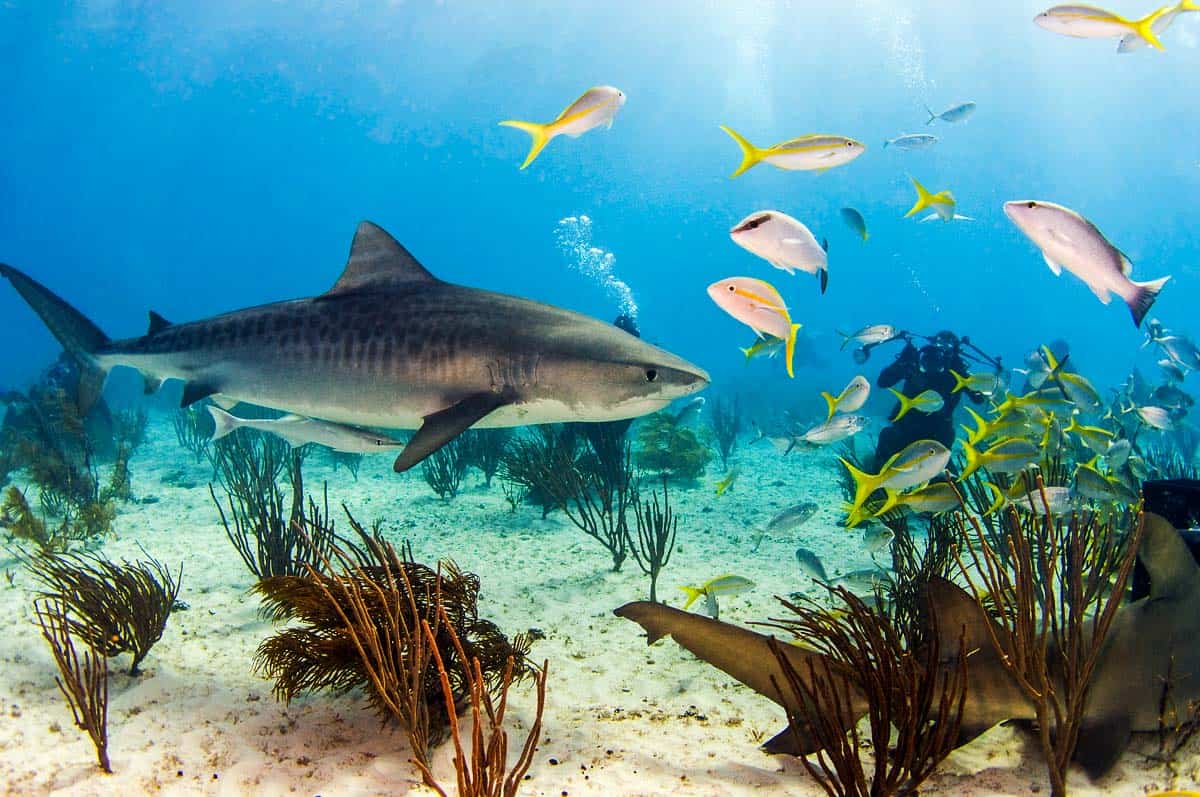
Great White Shark
SCIENTIFIC NAME
Carcharodon carcharias
RECORD LENGTH
20ft (6.4m), typically 14ft – 16ft (4.2m – 4.8m)
RECORD MASS
4200lbs (1905kg), 1500lbs – 2000lbs (680kg – 907kg)
SPEED
Up to 35mph (50kph)
EST. GLOBAL POPULATION
Considered in decline, though regional recovery has been observed
MAJOR THREATS
Shark control programs, fisheries bycatch
FEEDS ON
Seals, sea lions, bony fish
COMMONLY FOUND IN
Temperate and tropical waters around the world
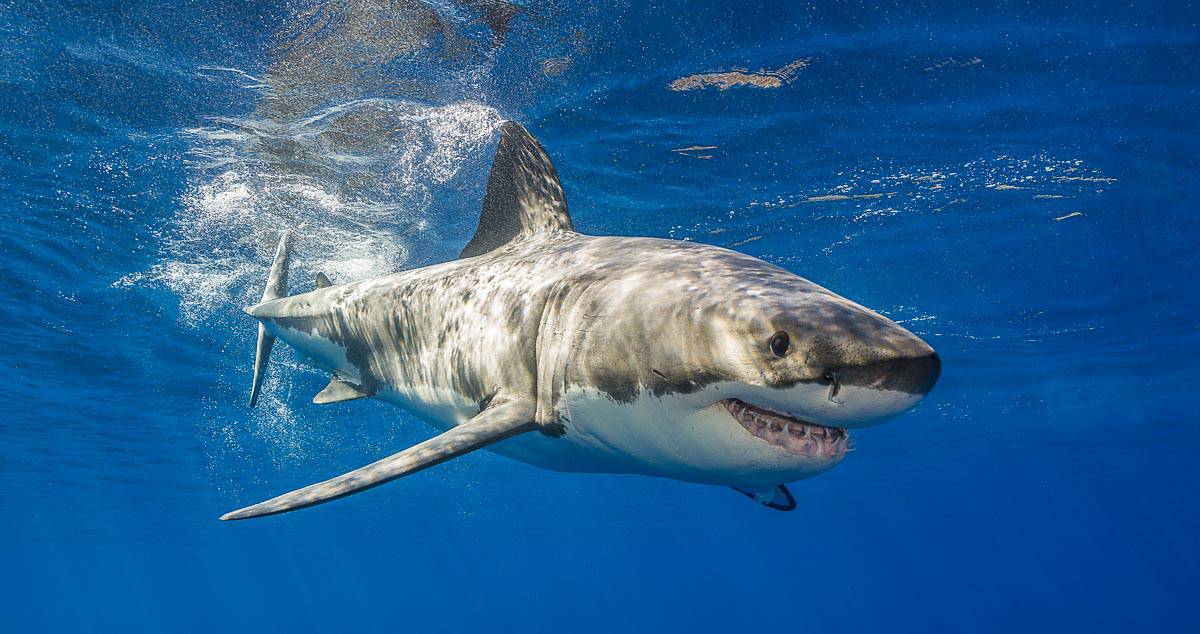
Great whites are undoubtedly the most iconic shark species swimming in the ocean today. Their notoriety as vengeful predators is an unfortunate consequence of the creative imagination of a young man who was just trying to feed his family by writing a book.
The name Peter Benchley may not strike a chord, but this work has influenced global perceptions about great white sharks. In a desperate attempt to support his wife and children Benchley penned Jaws, a fictional account of a man-eating shark exacting revenge by terrorizing a well-to-do beach town. Its smashing success came at the unfortunate expense of sharks around the world, especially the great white.
Not long after Jaws Peter Benchley came out as an ocean advocate, and invited others to follow. Ocean Ramsey is an early-career marine biologist, shark conservationist, and professional diver who doesn’t shy from the spotlight. Her novel shark research program involves matching trained biologists with members of the public for a fun and educational cageless freedive experiences with sharks. Her mission is “to combat the irrational fear many people have of sharks due to the lack of scientific information, experience, and primarily fear imparted by traditional “Jaws” type media that demonizes sharks.”
Is any of this working? Two published reports from 2014 indicate great white shark populations are recovering after implementing a variety of conservation in the 1990s. Similar trends have been observed in Australia, South Africa, and California. However, the expert IUCN lists great white shark populations as declining globally. For a deeper analysis, see what the good folks at the Smithsonian Magazine are saying.
Prehistoric Megaladon
SCIENTIFIC NAME
Otodus megalodon
RECORD LENGTH
60ft (18m)
RECORD MASS
75,000lbs (34,000kg)
SPEED
Unknown, likely fast
EST. GLOBAL POPULATION
Extinct
MAJOR THREATS
None
FEEDS ON
Unconfirmed, likely marine mammals, turtles, fish
COMMONLY FOUND IN
Worldwide Oceans
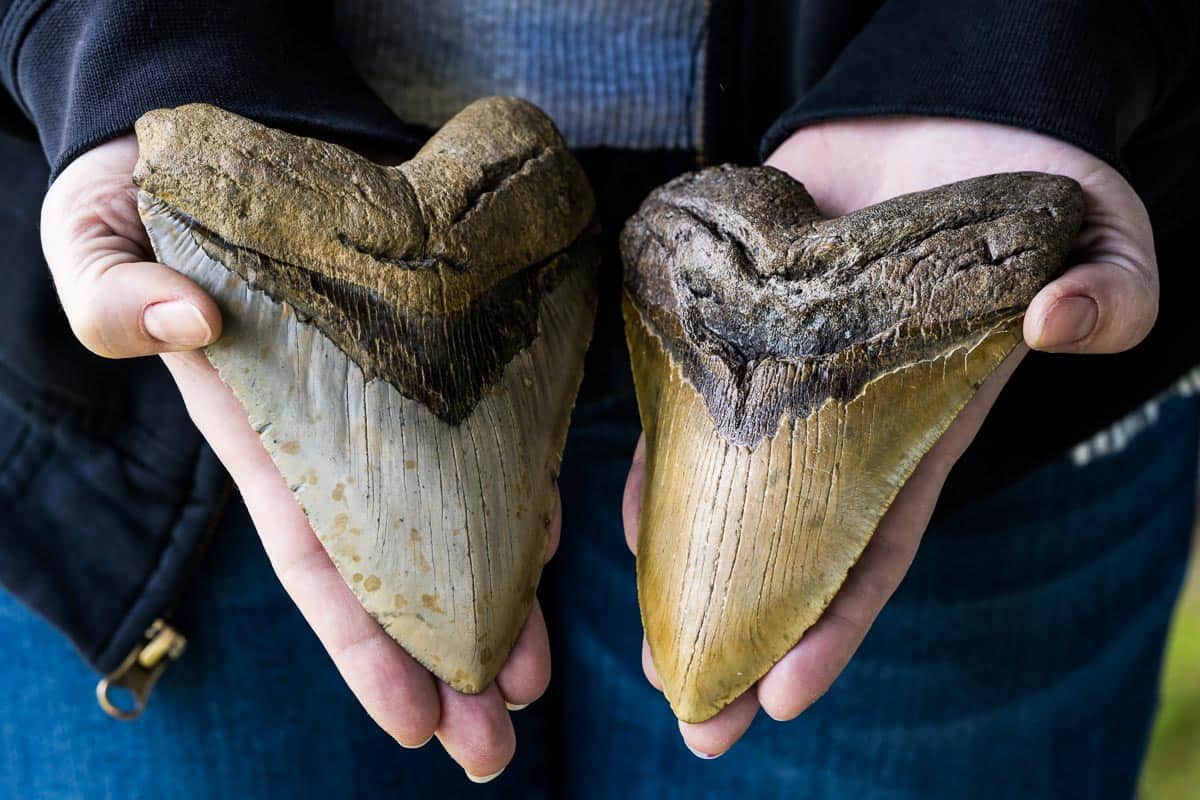
The megalodon is mighty famous for being the largest shark to ever roam the Earthly seas. The enormity of this prehistoric giant is hard to grasp; as heavy as 10 elephants, and longer than a Blue Bird school bus. The blue whale is the only animal alive today that has outgrown the megalodon.
If you’re asking yourself “are sharks fish or mammals,” here is a reminder. Whales are mammals and have rigid bony skeletons. These bones can harden into fossils that last millennia and can be dug up by curious researchers. Sharks are fish with skeletons made of flexible cartilage. Cartilage is soft and can’t fossilize, thus leaving no trace in the historical record.
How can researchers study a creature that has been extinct for 2.5 million years and didn’t leave behind any bones? By studying the teeth, of course! Fossilized megalodon teeth are actually quite common, and much of what science knows about the megalodon has been gleaned from teeth collected from around the world.
What science has learned from the megalodon is that apex predators can, and sometimes do, become extinct. Research also shows that extinction of one species often allows a different species to develop. “When we calculated the time of megalodon’s extinction, we noticed that the modern function and gigantic sizes of filter feeder whales became established around that time,” says Megalodon expert Catalina Pimiento. “Future research will investigate if megalodon’s extinction played a part in the evolution of these new classes of whales.” – added Pimiento.
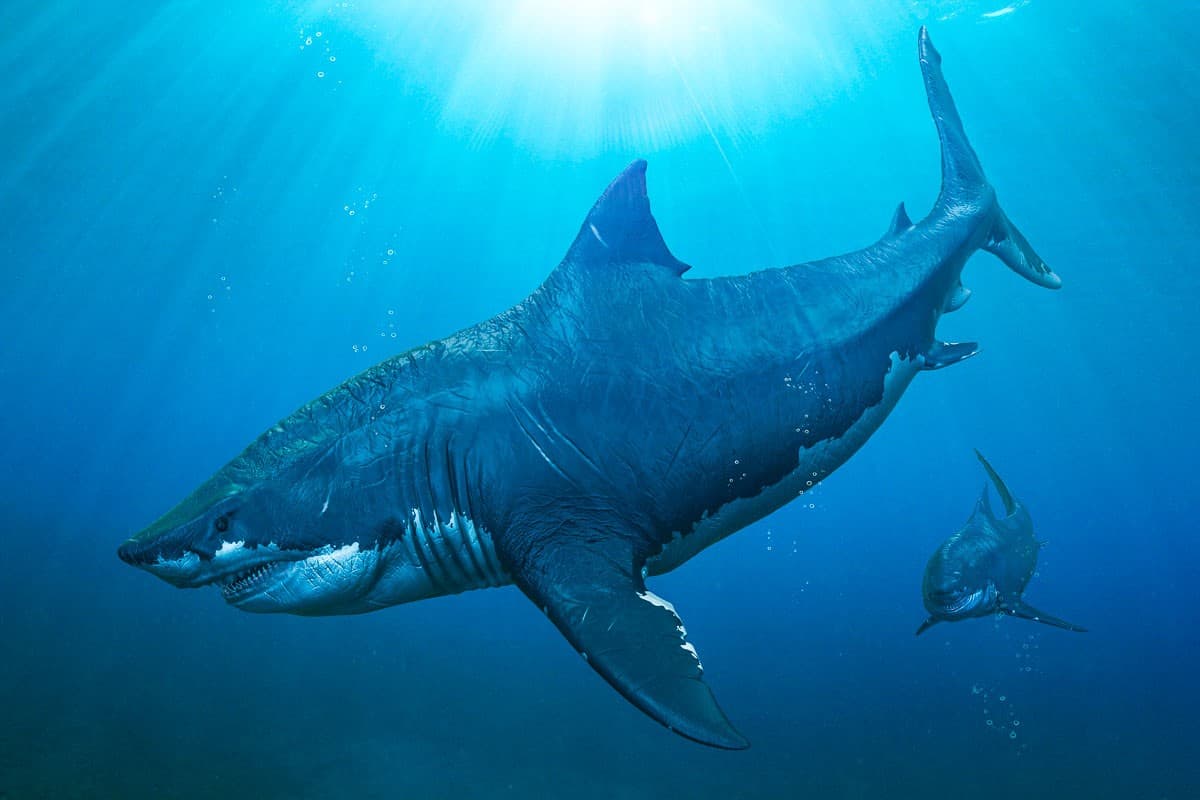
INTERESTING SHARK TYPES
Final Thoughts
Experts estimate 100 million sharks are slaughtered by humans each year, and many of the 350+ shark species worldwide are experiencing population decline. “Biologically, sharks simply can’t keep up with the current rate of exploitation and demand,” said Boris Worm, a research professor at Dalhouise University. “Protective measures must be scaled up significantly in order to avoid further depletion and the possible extinction of many shark species in our lifetime.”
And while a film like Jaws has strongly influenced the global perceptions of sharks, improved scientific understanding and ramped up educational campaigns have illuminated that plight of the sharks. Society is waking up to the value of sharks and realizing they’re worth much more swimming in the sea than anywhere else.
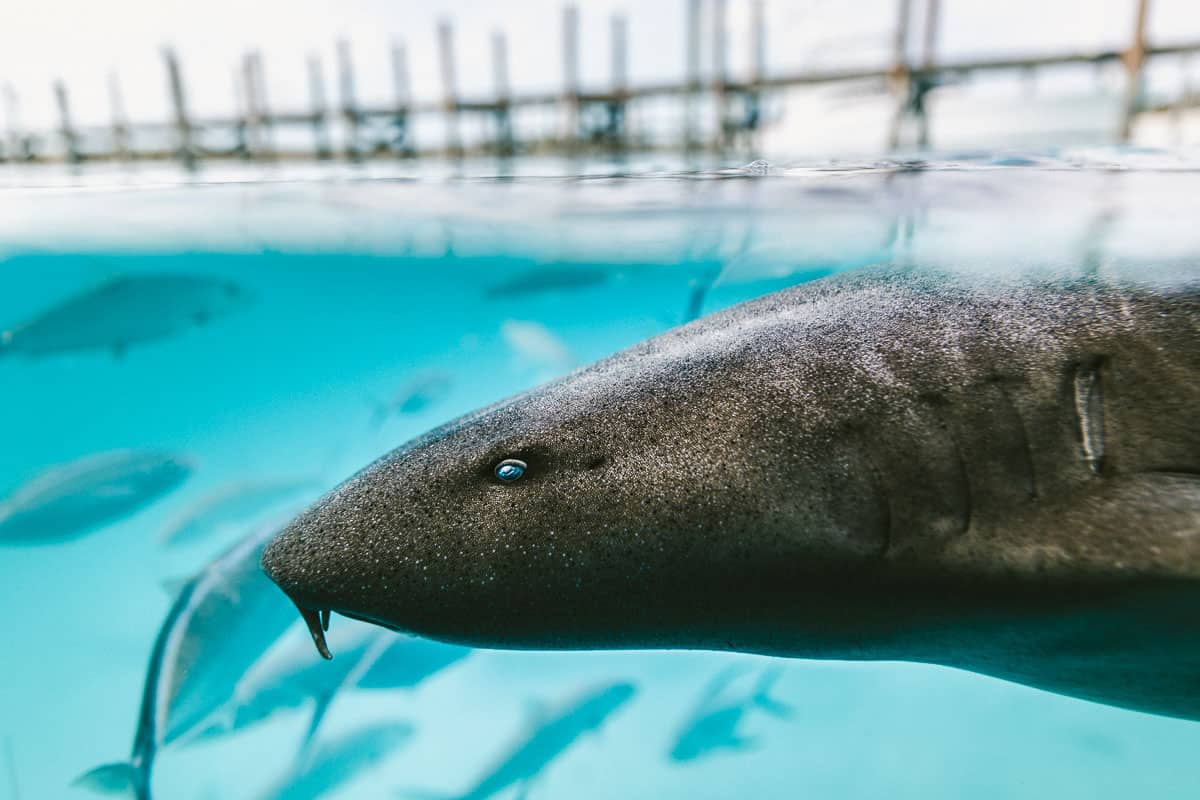
SOURCES
INTERESTING SHARK TYPES
- First Summer Blockbuster Film, guinnessworldrecords.com
- Cookie Cutter Shark on FishBase, fishbase.se
- Family Matters for World’s Second Biggest Fish, phys.org
- Not Just on Vacation: Why Leopard Sharks Hang Out in La Jolla, ibiology.org
- Interesting Facts about Ornate Wobbegong Sharks, sportdiver.com
REACH OUT
As always, we create our content with you, fellow divers, in mind. So, how’d we do? Did you find this informative? Did it help you make a decision? Did we miss anything? We’d love to hear from you below. Thanks for reading and we hope your next dive is a great one!


